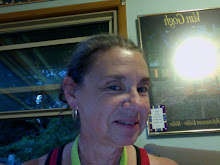Yesterday's Done list began with the item "Finished Tillie Olsen's Silences, after a mere twenty years of aborted attempts." Twenty years was no exaggeration, though the margin of error is a year or two in either direction. Why did I continue to try to read this book, and to fail? Two questions. Two sets of answers, with some overlap.
I was initially led to this book in the course of reading for my dissertation. My research dealt broadly with how work fits—or doesn’t—into women’s lives, and specifically with trying to untangle the stories of two different groups of midwives, with two separate “career” paths. But I was especially intrigued because Olsen’s work is concerned with writers whose work has been punctuated, or truncated, or prevented altogether by long periods when they couldn’t write.
As my own silences grew in number and duration, I would periodically hunt down this book (which grew increasingly difficult to find as years passed), check it out of one library or another, and begin to read. My attempts were met with varying levels of “success,” measured by number of pages read. Progress was not linear. Sometimes, I didn’t make it past the first section. At least once, I reached the halfway mark.
Over the two decades in question, I have finished hundreds, perhaps thousands of books. Some were read for distraction, some were serious literature. Not a few were nearly impenetrable academic tomes, through which I slogged my way and came out the other side, if not wiser, at least momentarily victorious. I am not a book weenie.
So why did Silences so stubbornly resist my efforts to add its notch to my book belt? Looking back, I see that I generally sought this book in desperation, when circumstances seemed to conspire to enforce my muteness. Those same circumstances made it difficult to read seriously at such times, and to confront intellectually this painful reality.
I came to Tillie Olsen for absolution, if not excuse, but I was too angry with myself to accept such a grace. I was looking, too, for a way out of the wilderness. But Olsen provides no map. In painstaking detail, she documents the suffering of writers whose voices were stilled. She includes devastating quotes from writers, well-known and not, whose work was bounded by barriers of gender, class, and/or race. And she reminds us of the majority of humans for whom written expression was and is impossible.
I should say, too, that another, lesser barrier to my finishing her book was its style, strangely structured, almost haphazardly organized. Added to its oppressive subject, this presentation hardly welcomed curling up with this particular book. I am of the opinion that Olsen’s own enforced silences, over most of what might have been her writing life, have something to do with this.
And what of my silences, on the other side of this book at last? I guess I am finally ready for the mercy of my own forgiveness, buttressed by Olsen’s arguments and data. And to make my own map. It remains to be seen how far this will take me.
Tuesday, January 12, 2010
Silences Revisited
Labels:
books read,
completion,
done list,
finishing,
silence,
writing
Share this post ~
Subscribe to:
Post Comments (Atom)












No comments:
Post a Comment